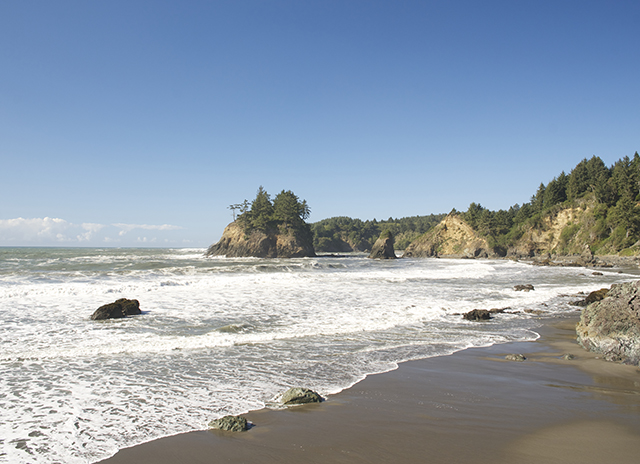
The researchers—Eric Bjorkstedt, Jeffrey Abell and Brian Tissot—will be looking at how low pH ocean acidification and low dissolved oxygen hypoxia impact the behavior, physiology and genetics of juvenile rockfish.
“While most research examines either low Ph or low dissolved oxygen, we will be examining the effects of both low Ph and low oxygen in various combinations,” says Tissot, director of HSU’s Marine Lab and the principal investigator on the grant.
Ocean acidification and hypoxia are emerging threats to marine ecosystems driven by growing concentration of CO2 in the atmosphere. Off the North Coast, brief exposures of low pH and low oxygen conditions occur naturally during extended, strong upwelling events. These conditions are expected to increase in frequency, duration, and intensity as climate change progresses.
“One concern is that greater exposure to low pH and hypoxia will put juvenile rockfish at risk of increased predation as they transition to benthic life in kelp forests and on rocky reefs,” says Bjorkstedt, a scientist with the NOAA’s National Marine Fisheries Service and an adjunct faculty member. “This is a critical stage in the life cycle, when increased predation can have strong effects on future abundance.”
The researchers will test the effects of exposure to acidified water and hypoxia on fishes’ swimming performance in flow tanks with progressively faster currents—a fish treadmill—as well as their ability to detect predators and exhibit escape behaviors. By identifying genetic effects—what genes are turned on and off during exposure to stressful conditions in the laboratory—researchers will have a tool for assessing whether low pH and hypoxia events are affecting juvenile rockfish in natural settings.
The HSU researchers will focus on juvenile rockfish since they’re both commercially and ecologically important in nearshore ecosystems. Their research—conducted in collaboration with Cal State Monterey Bay, NOAA Fisheries and Moss Landing Marine Labs—will be used as a model for other marine organisms.